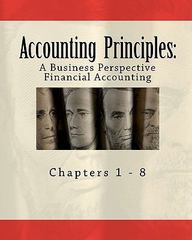Question
In an economy, there are two types of firms: 50% of firms are risky (type A) and 50% are safe (type S). Each firm, to
In an economy, there are two types of firms: 50% of firms are risky (type A) and 50% are safe (type S). Each firm, to start the operation, needs to make an investment of 10 currency units with its own resources and borrow 10 currency units from a competitive and risk-neutral bank (with zero expected profit). Firms know their own type. Once operating, a risky firm has a 20% probability of success, in which case it has an output of 120 currency units. With 80% probability, a risky firm fails and has zero output. A secure firm, on the other hand, is 80% successful, in which case it produces 30 currency units. With a 20% probability, a safe firm fails and has a profit of zero. After production is carried out, a firm only pays the bank if it is successful. The bank charges a payment conditional on its success, in an expected value of 10 (note that as there is only payment in case of success, the payment in this contingency must be greater than 10). The profit of a firm, in case of success, is the value of its production, minus the 10 monetary units anticipated in the first period, minus the amount paid to the bank. So, for example, a successful risky firm has a profit of 110-P, with P being the amount paid to the bank. Upon failure, both types of firms have a profit of -10 (corresponding to the investment loss in the first period). Both firms are risk neutral, which implies that, ex-ante, they make their decisions in a way that maximizes the expected profit. (a) What is the expected output of each type of firm? (Hint: you will see that both types will have the same expected production) (b) Suppose the bank observes the type of firm. Show that the bank will charge 12.5 currency units of type S firms on success. (c) Still assuming that the bank observes the type of firm, what will be the amount charged for type A in case of success. (d) What will be the expected profit of a firm of type S if the bank covers the amount of 12.5 in case of success, as in item (b). (e) Suppose both types of firms operate, but the bank does not observe their type (although it knows that half the firms are of each type). What is (from the bank's point of view) the probability of success of any given firm? With this probability of success, what would be the amount that the bank should charge (if successful) to cover the amount of 10 monetary units initially anticipated.
(f) Show that, given the payment value derived in item (e), firms of type S will prefer not to produce (they would have a negative profit when producing). (g) Achieve the adverse selection balance (ie determine what type to borrow and how much it pays if successful). (h) Determine, in this equilibrium, what will be the expected profit of the only type of firm that operates. (i) (equilibrium with separation) Suppose now that the bank proposes the following possibility. A firm can pay 12.5 if it undertakes, only in case of failure, to undergo a bureaucratic procedure that costs it the equivalent of 10 monetary units (contract 1). If a firm does not assume this commitment, in case of success, it must pay a higher amount, equivalent to the derivative in (c) (contract 2). Show that firms of type S will prefer contract 1 and firms of type A will prefer contract 2. (j) Argue (in less than 3 lines) that the combination of contracts proposed in (i) brings a Pareto gain in relation to the adverse selection equilibrium.
Step by Step Solution
There are 3 Steps involved in it
Step: 1

Get Instant Access to Expert-Tailored Solutions
See step-by-step solutions with expert insights and AI powered tools for academic success
Step: 2

Step: 3

Ace Your Homework with AI
Get the answers you need in no time with our AI-driven, step-by-step assistance
Get Started


